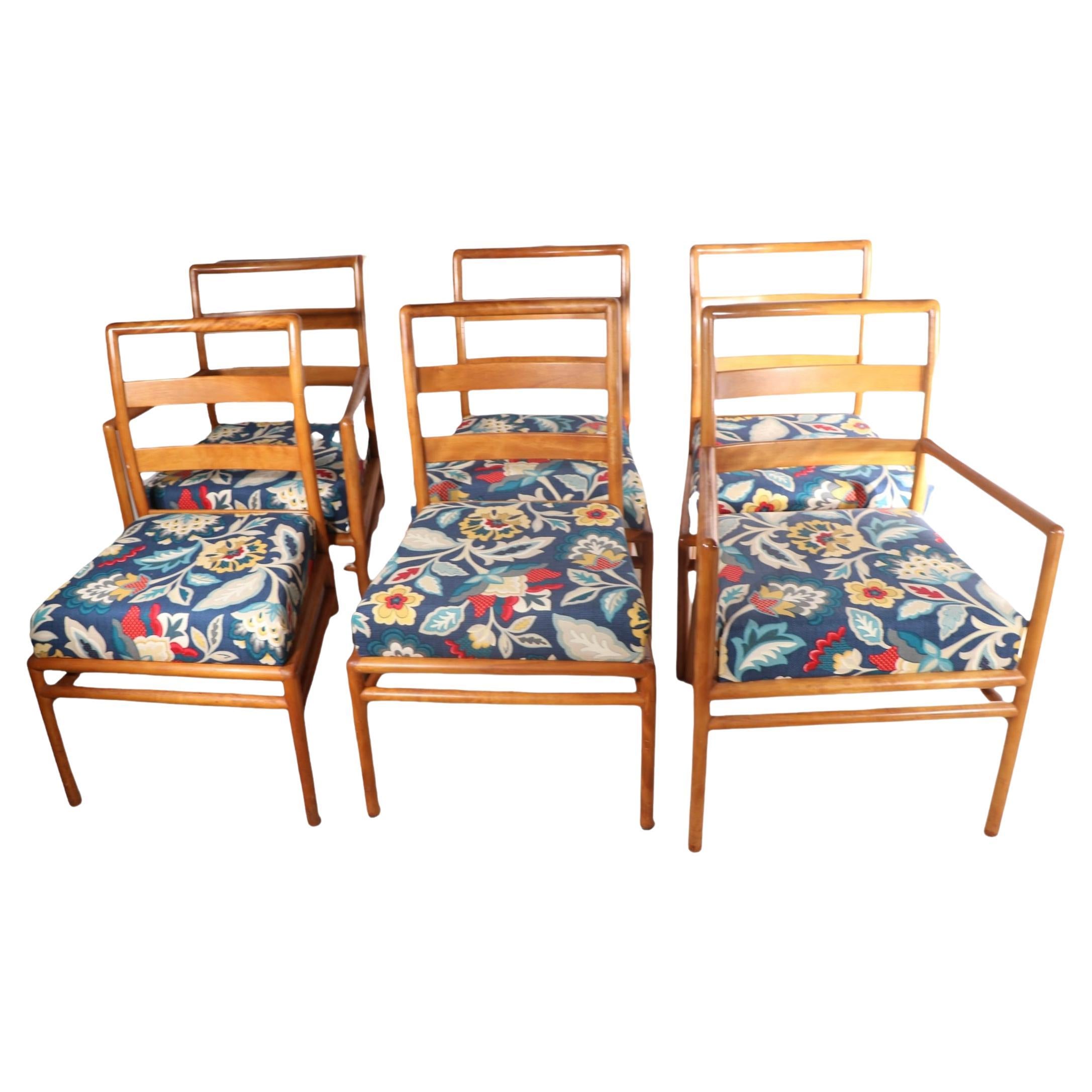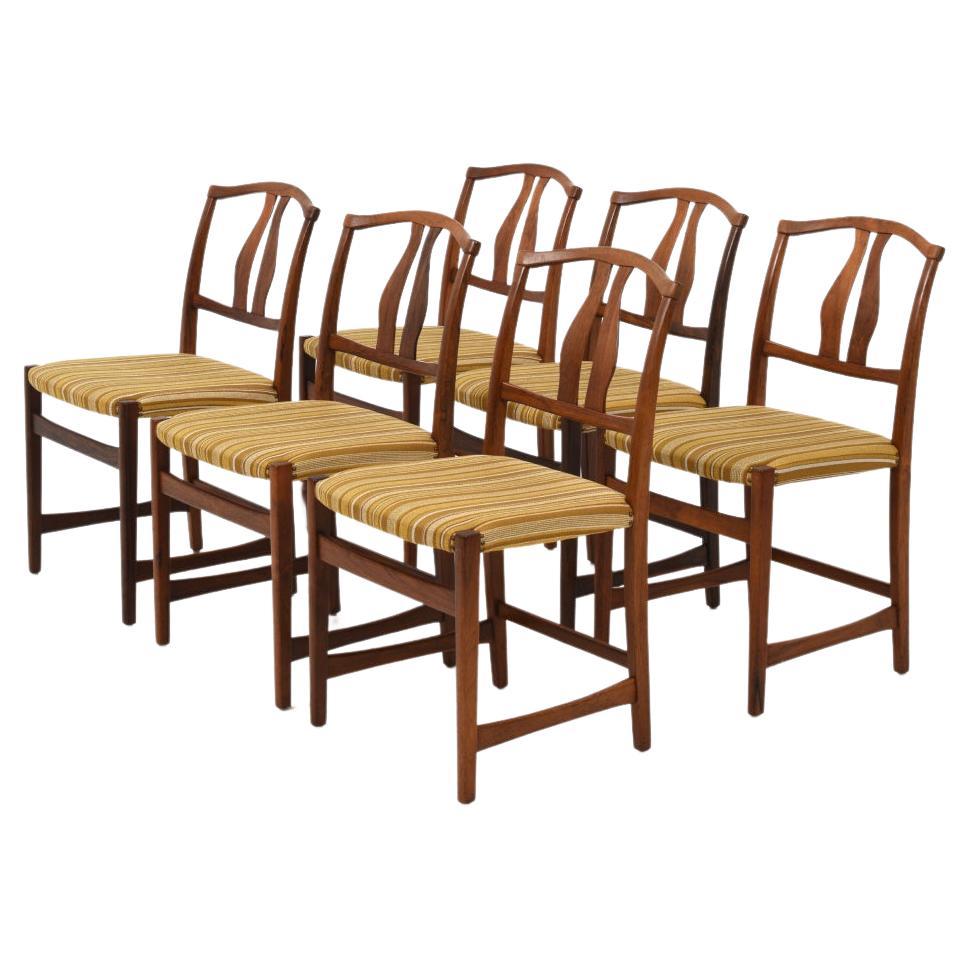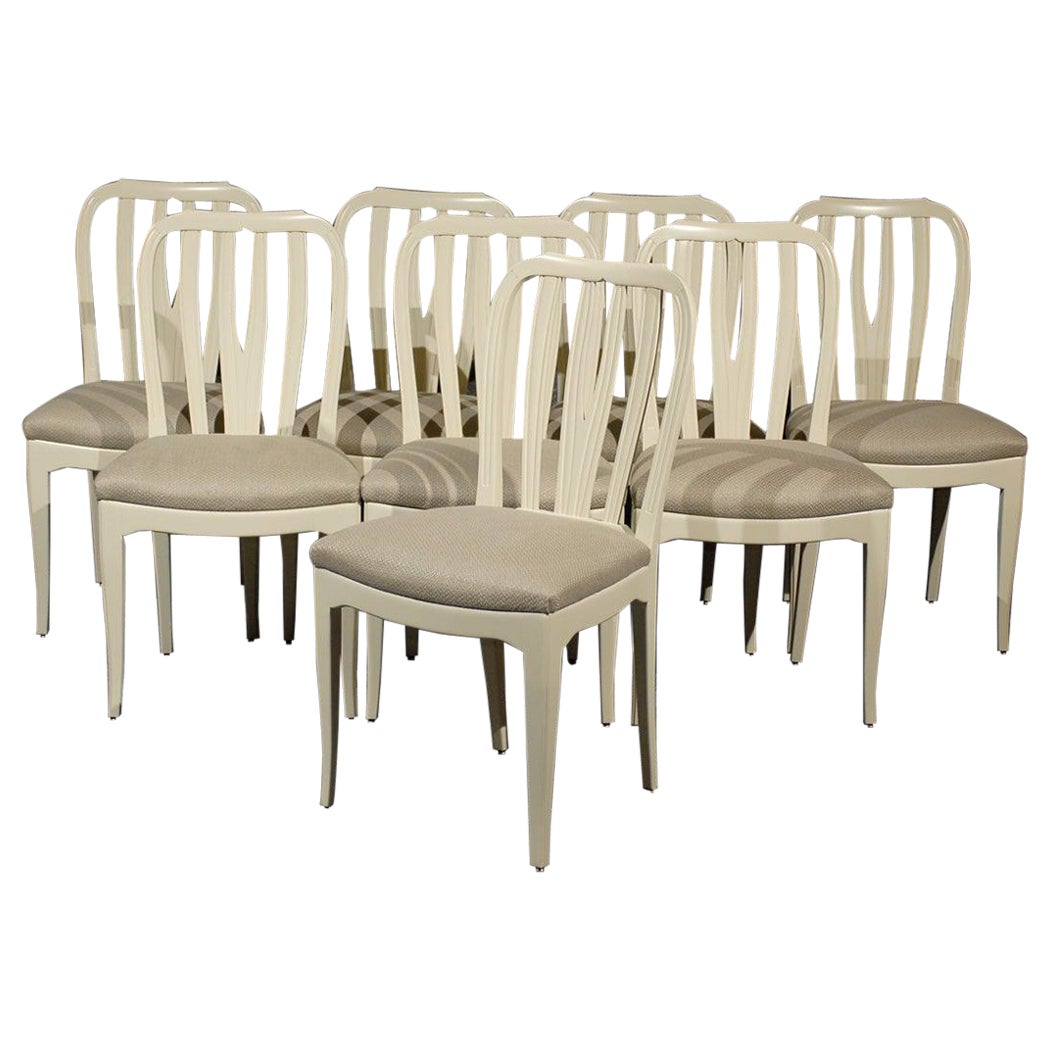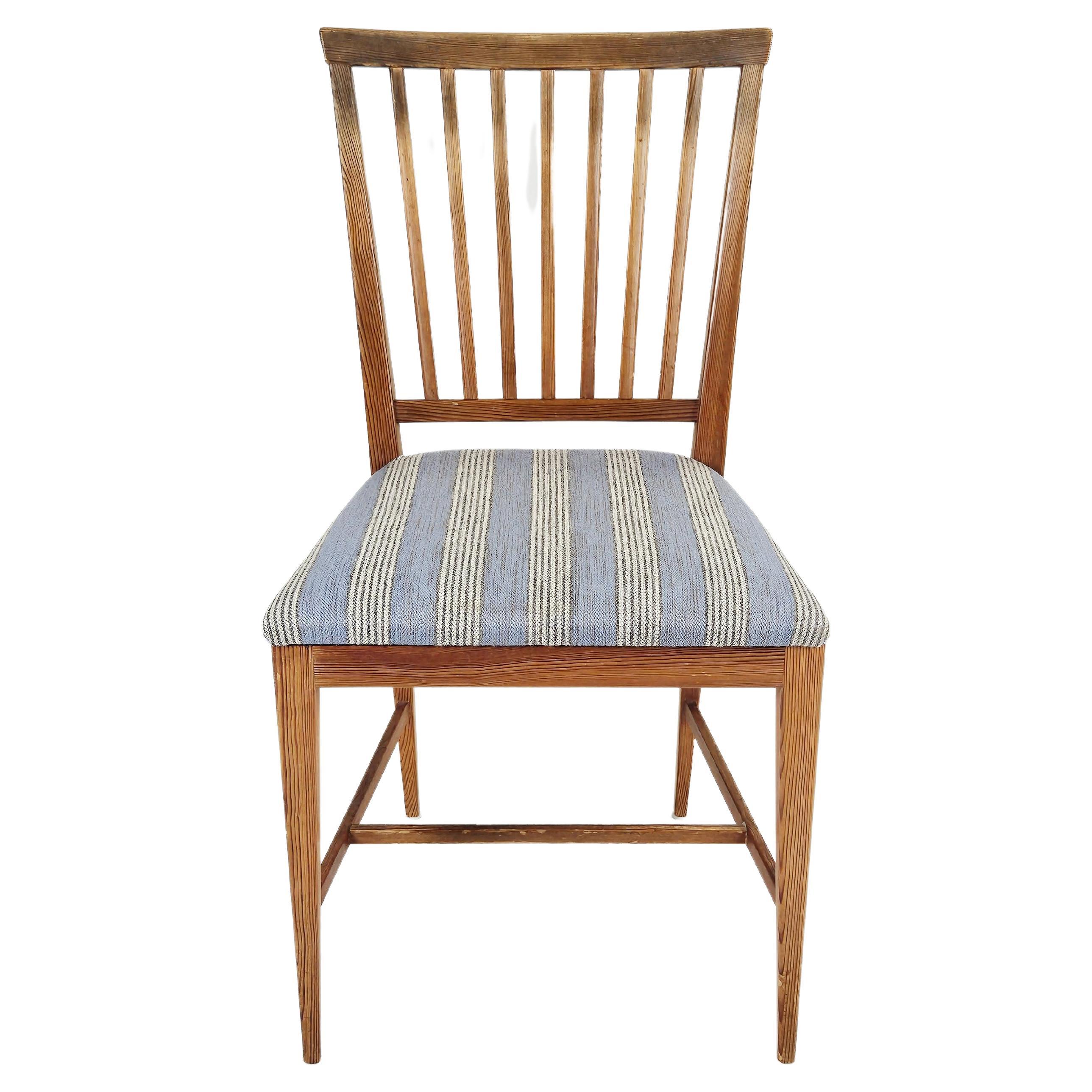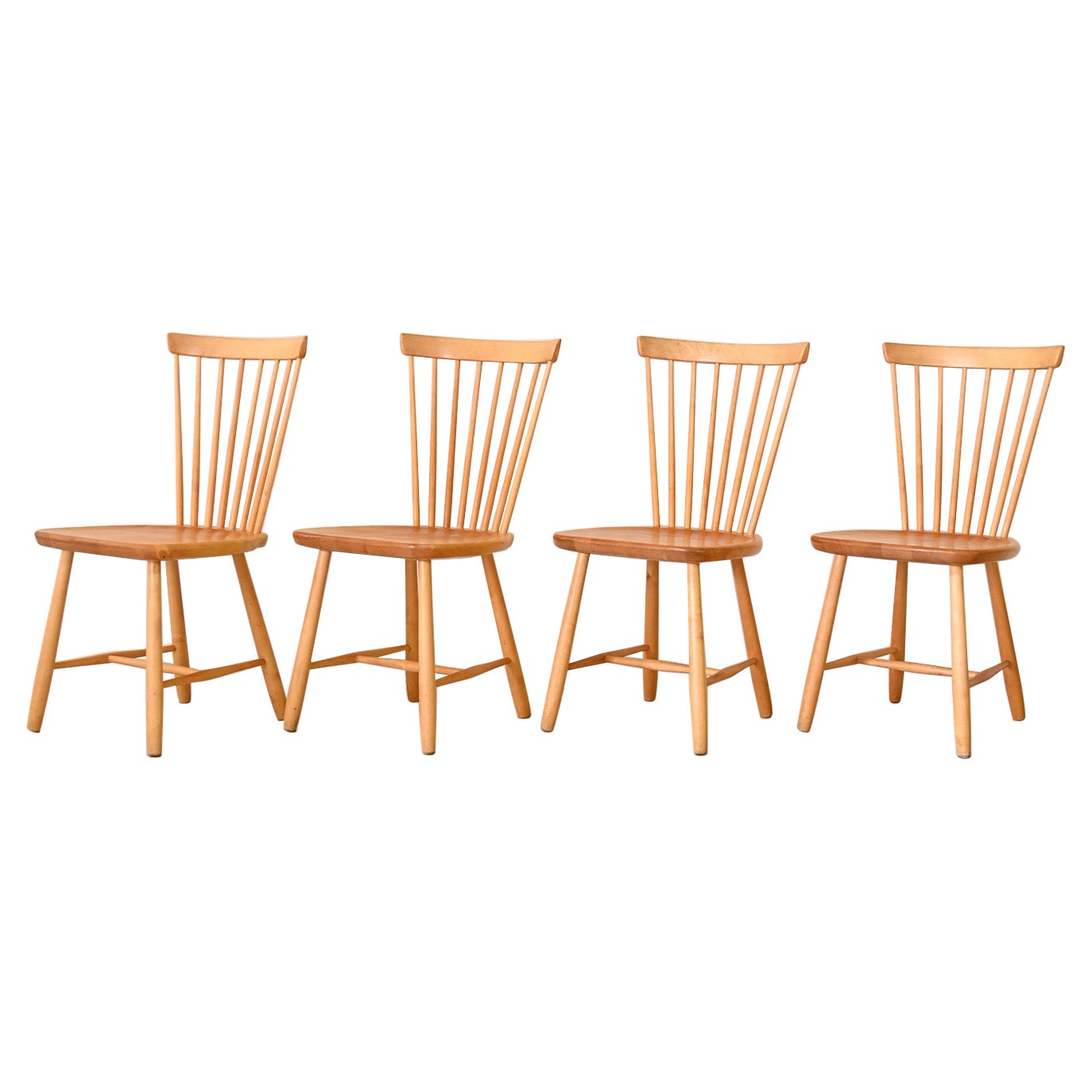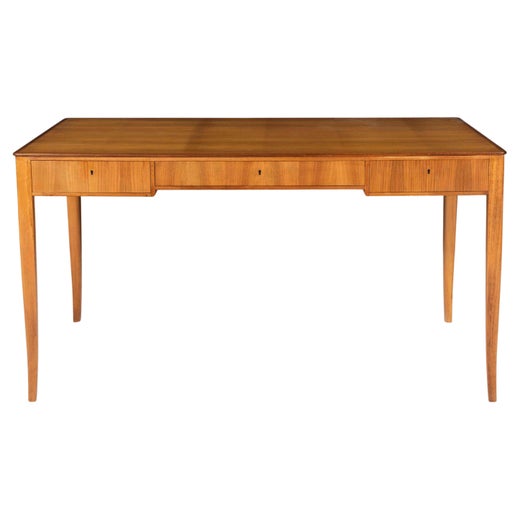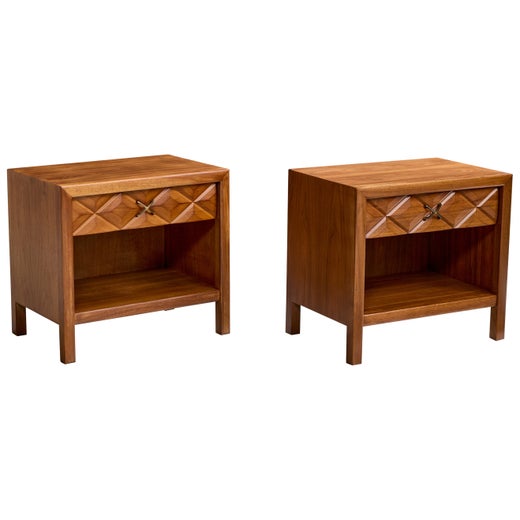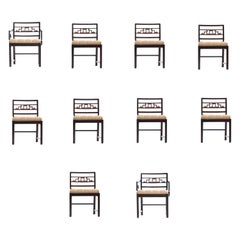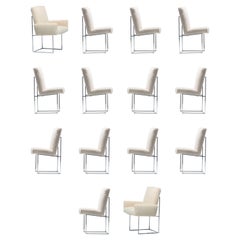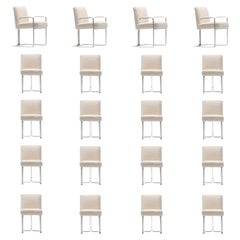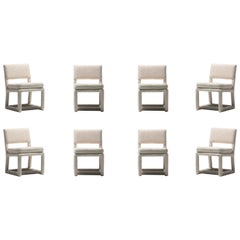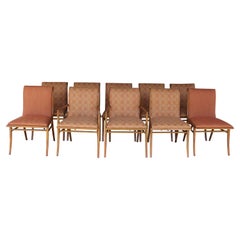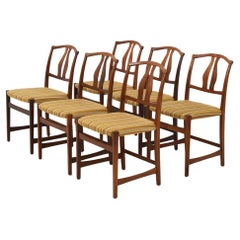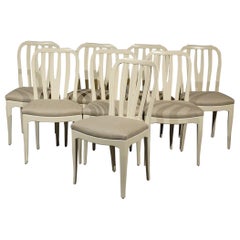Set of Ten Klismos Dining Chairs by Carl Malmsten for Widdicomb, circa 1940
About the Item
- Creator:Widdicomb Furniture Co. (Manufacturer),Carl Malmsten (Designer)
- Dimensions:Height: 33 in (83.82 cm)Width: 20.75 in (52.71 cm)Depth: 18 in (45.72 cm)Seat Height: 18.75 in (47.63 cm)
- Sold As:Set of 10
- Style:Mid-Century Modern (Of the Period)
- Materials and Techniques:
- Place of Origin:
- Period:
- Date of Manufacture:1940s
- Condition:Refinished. Reupholstered. Wear consistent with age and use. Every surface of these iconic 1940s dining chairs was professionally tended to. Mahogany was refinished and restained as per original design. Professionally reupholstered with Holy Hunt Great Outdoors Fabric rated highly durable. Ready to ship!
- Seller Location:Saint Louis, MO
- Reference Number:1stDibs: LU4235136665452
Carl Malmsten
Carl Malmsten, a prominent furniture designer and educator associated with Swedish modernism, enjoyed immense popularity for his shapely sofas and armchairs in luscious color palettes. Malmsten believed that light — much like our eyes and bodies — doesn’t like to bump into sharp objects. Smooth edges, on the other hand, are kinder to the eye and and to our touch, and allow light to softly bounce off surfaces. Malmsten felt that if his furniture didn’t “serve well” in the home, it had no business being there.
Malmsten’s career essentially began in 1915, when his submissions for a competition to furnish the new Stockholm City Hall were first- and second-place prize winners. In the 1920s, his profile soared. He won a prize at the International Exhibition of Modern Decorative and Industrial Arts — the show that brought the Art Deco style to worldwide attention — and quickly became one of the most sought-after designers of commercial seating in Sweden.
Malmsten was soon contracted to design chairs, tables and other furniture for the Stockholm Concert Hall, the Swedish Institute in Rome and the Waldorf Astoria hotel in New York. His famous Art Nouveau-influenced Stadshusstolen chair, designed for Stockholm City Hall in 1916, is a highlight of the city’s recently opened Museum of Furniture Studies. Malmsten expanded into interior design and created a luxurious, well-appointed living room in the palace of then-Crown Prince Gustaf Adolf and his bride, Crown Princess Louise.
In the 1930s, Malmsten clashed with critics when he voiced his opposition to functionalism. Like Danish modernist Kaare Klint, he favored using quality local materials and prized traditional craftsmanship. Malmsten’s furniture draws on graceful neoclassical influences, and he said that extreme functionalism contributed to “sterile” interiors — while the curving contours of his work may share ground with furniture designed by Alvar Aalto or Bruno Mathsson, Malmsten differed with Bauhaus eminences and some Scandinavian modernists on their prioritization of functionalism.
For an exhibition in 1956 at the Röhsska Museum in Gothenburg, Malmsten designed furniture that was intended for mass production — and his striking designs began to make their way into middle-class Swedish homes owing to Malmsten’s partnerships with manufacturers such as O.H. Sjögren. Until then, he had built his pieces at the school he founded in the 1930s or had them made by artisans at several small local workshops.
Malmsten founded a number of schools for design and collaborated with other designers who shared his philosophy of “hand and mind in creative collaboration.” These included the esteemed textile artist Märta Måås Fjetterström, whose pieces he included in exhibits and even his own home.
On 1stDibs, find vintage Carl Malmsten seating, tables, cabinets and more.
Widdicomb Furniture Co.
Admirers of vintage mid-century modern furnishings likely recognize the Widdicomb Furniture Company name for the fruitful partnerships it forged with iconic designers such as Frank Lloyd Wright, T.H. Robsjohn-Gibbings and Mario Buatta. But there is more to the Widdicomb story than the albeit quite covetable sofas and bedroom furniture it produced during the middle of the 20th century.
A wealth of pine and oak forests rendered Grand Rapids, Michigan, a logging center during the 1800s, and it eventually gained recognition for its furniture industry. The American city became a destination for furniture makers who hailed from across the United States and beyond. Furniture maker George Widdicomb emigrated from England to the United States in 1845, eventually setting up a cabinet shop in Syracuse, New York, before moving west to Grand Rapids. There, he opened a shop with his four sons, including John Widdicomb, whose name would help carry the family legacy into the 20th century.
The Widdicomb shop in Grand Rapids prospered, as the patriarch’s formal English training allowed him to produce pieces with superior craftsmanship compared to those of his competitors. Although the Civil War halted business and took the life of one of the Widdicomb brothers, the family’s survivors would start anew as Widdicomb Brothers and Richards, soon renamed the Widdicomb Furniture Company.
John Widdicomb, however, split from the family business in 1897 to create the John Widdicomb Company, where he would go on to focus on Louis XV- and French Provincial-style furnishings. Chairs made in these styles have distinct characteristics, such as floral motifs carved in the frames and gently angled backrests. John's company also remained a family affair: The founder’s son, Harry, assumed control of the company when his father died in 1910, while John's nephew Ralph Widdicombe — who retained the English spelling of his last name and joined the John Widdicomb Company at its start — designed every single piece of the offerings at his uncle's manufacturing outfit until he retired in 1951. Ralph was an internationally distinguished furniture designer whose modern mahogany bedroom suite won first prize at the Paris Exposition in 1900.
The original iteration of Widdicomb, which was helmed by John's older brother William while John ran his own brand, had shifted from making period revival styles of furniture, such as Georgian and Chippendale, to manufacturing modern pieces in the late 1920s. Today vintage Widdicomb seating, tables and other pieces produced during the postwar years are particularly sought after by collectors of mid-20th-century furniture.
In 1959, master woodworker George Nakashima created his Origins collection for Widdicomb when the firm merged with Mueller Furniture Corporation and was known, for around 10 years, as Widdicomb-Mueller. Origins, a revered Shaker-influenced group of nightstands, upholstered lounge chairs, dining-room tables and more, saw Nakashima working with woods like Carpathian elm and laurel in his Pennsylvania studio.
Eventually, the two Widdicomb companies would combine in 1970, operating under the name John Widdicomb Co.
In 2002, the business closed after more than a century of operations, and its assets were acquired by Stickley Furniture. Interestingly, it was not the first time Widdicomb and Stickley overlapped: In the final years of the 19th century, the companies opened a shared storehouse in London, while John Widdicomb and Albert Stickley would travel Europe together for the purposes of research.
Find vintage Widdicomb coffee tables, case pieces, dining chairs and more on 1stDibs.
- ShippingRetrieving quote...Shipping from: St. Louis, MO
- Return Policy
More From This Seller
View AllVintage 1950s American Chinoiserie Dining Room Chairs
Upholstery, Mahogany
Vintage 1970s American Mid-Century Modern Dining Room Chairs
Stainless Steel
Vintage 1950s American Mid-Century Modern Dining Room Chairs
Stainless Steel
Vintage 1970s American Mid-Century Modern Dining Room Chairs
Bouclé, Upholstery
Vintage 1950s American Mid-Century Modern Dining Room Chairs
Upholstery, Cane, Walnut
Vintage 1960s American Hollywood Regency Dining Room Chairs
Walnut, Fabric
You May Also Like
Vintage 1950s American Mid-Century Modern Dining Room Chairs
Walnut, Fabric
Mid-20th Century American Mid-Century Modern Dining Room Chairs
Upholstery, Walnut
Vintage 1960s Swedish Scandinavian Modern Dining Room Chairs
Rosewood
Vintage 1950s Swedish Mid-Century Modern Dining Room Chairs
Linen, Wood
Mid-20th Century Swedish Scandinavian Modern Dining Room Chairs
Pine
Vintage 1960s Swedish Scandinavian Modern Dining Room Chairs
Wood

